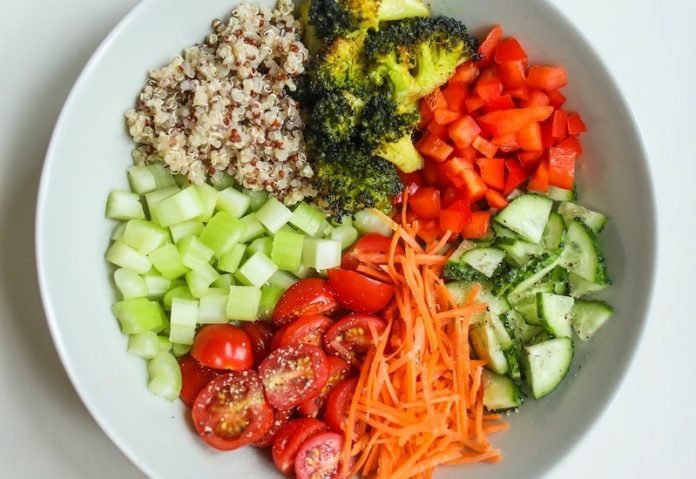
You may need to change what you eat to manage your chronic kidney disease (CKD).
Work with a registered dietitian to develop a meal plan that includes foods that you enjoy eating while maintaining your kidney health.
The steps below will help you eat right as you manage your kidney disease.
Step 1: Choose and prepare foods with less salt and sodium
Why? To help control your blood pressure. Your diet should contain less than 2,300 milligrams of sodium each day.
Buy fresh food often. Sodium (a part of salt) is added to many prepared or packaged foods you buy at the supermarket or at restaurants.
Cook foods from scratch instead of eating prepared foods, “fast” foods, frozen dinners, and canned foods that are higher in sodium. When you prepare your own food, you control what goes into it.
Use spices, herbs, and sodium-free seasonings in place of salt.
Check for sodium on the Nutrition Facts label of food packages. A Daily Value of 20 percent or more means the food is high in sodium.
Try lower-sodium versions of frozen dinners and other convenience foods.
Rinse canned vegetables, beans, meats, and fish with water before eating.
Look for food labels with words like sodium free or salt free; or low, reduced, or no salt or sodium; or unsalted or lightly salted.
Step 2: Eat the right amount and the right types of protein
Why? To help protect your kidneys. When your body uses protein, it produces waste. Your kidneys remove this waste. Eating more protein than you need may make your kidneys work harder.
Eat small portions of protein foods.
Protein is found in foods from plants and animals. Most people eat both types of protein. Talk to your dietitian about how to choose the right combination of protein foods for you.
Animal-protein foods: Chicken, Fish, Meat, Eggs, Dairy
A cooked portion of chicken, fish, or meat is about 2 to 3 ounces or about the size of a deck of cards. A portion of dairy foods is ½ cup of milk or yogurt, or one slice of cheese.
Plant-protein foods: Beans, Nuts, Grains
A portion of cooked beans is about ½ cup, and a portion of nuts is ¼ cup. A portion of bread is a single slice, and a portion of cooked rice or cooked noodles is ½ cup.
Step 3: Choose foods that are healthy for your heart
Why? To help keep fat from building up in your blood vessels, heart, and kidneys.
Grill, broil, bake, roast, or stir-fry foods, instead of deep frying.
Cook with nonstick cooking spray or a small amount of olive oil instead of butter.
Trim fat from meat and remove skin from poultry before eating.
Try to limit saturated and trans fats. Read the food label.
Heart-healthy foods: Lean cuts of meat, such as loin or round; Poultry without the skin; Fish; Beans; Vegetables; Fruits; Low-fat or fat-free milk, yogurt, and cheese
Limit alcohol
Drink alcohol only in moderation: no more than one drink per day if you are a woman, and no more than two if you are a man.
Drinking too much alcohol can damage the liver, heart, and brain and cause serious health problems. Ask your health care provider how much alcohol you can drink safely.
If you care about kidneys, please read studies about drug duo that could treat kidney failure, and common acid reflux drugs may increase your kidney disease risk.
For more information about kidney health, please see recent studies that drinking coffee may affect your kidney health, and results showing these vegetables may protect against kidney damage in diabetes.



